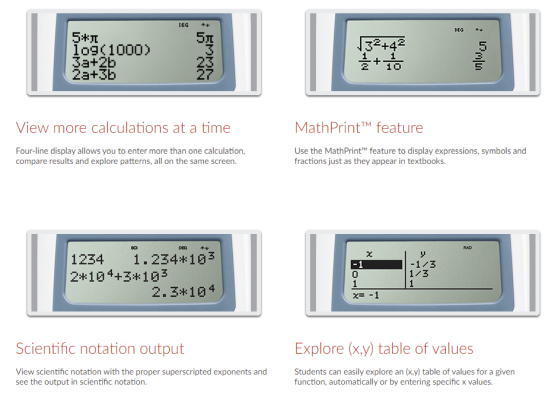In high school I used Casio scientific calculators. They had some particularly special features at the time such as physical constants, conversions, and multi-variable solve which made them quite handy for various courses in high school. However at university they were banned from certain exams due to 1) being (falsely) accused for being “programmable” and 2) as an actuarial student only particular Texas Instruments calculators were allowed.
In my financial mathematics course, we had to use the awful Texas Instruments BA-35 Solar. It was useful for financial calculations but did not have order of operations and was slow. In order to complete longer chained calculations accurately, intermediate steps would need to be stored in memory. This was made worse by the professor insisting this was the only calculator allowed to be used for the exams. Luckily the actuarial societies had more common sense and allowed the use of the (bewilderingly still sold) TI-30XIIS. This was a significant upgrade due to the two-line display, calculation history, and order of operations. It was an ‘OK’ calculator but did not really offer anything better than the Casio calculators that I was used to in high school.


The Texas Instruments TI-30XS MultiView was a revelation when it first came out because it was one of the first calculators that had a 4 line display with MathPrint™. Although from a feature sheet perspective it still could not measure against the Casios, the full dot matrix screen made it easy to write out calculations as they appeared on paper. This made the ability to go back to previous steps and edit so much more inviting than on the TI-30XIIS. I made the most of the fraction feature by making everything into a fraction to get very precise results rather than carrying around decimals. Then the ability to define an equation with letter variables (including a curvy x), storing values into the letter variables and executing … it was practically programmable! The statistical table was like a mini spreadsheet and great for tallying long sets of values. Then adding that in conjunction with the “programmable” functions, I could easily use it to assess different outcomes for a function and used this many times to “reverse check” my work.
Despite the TI-34 MultiView and TI-36X Pro being released with more sophisticated functions, the TI-30XS MultiView has a cleaner menu and button layout for arithmetic inputs. Neither of the later calculators are allowed for actuarial exams administered by the CAS or SOA. Although not as fun or cerebral as the HP RPN calculators, when there is a need to calculate something quickly and accurately this is usually the best choice!